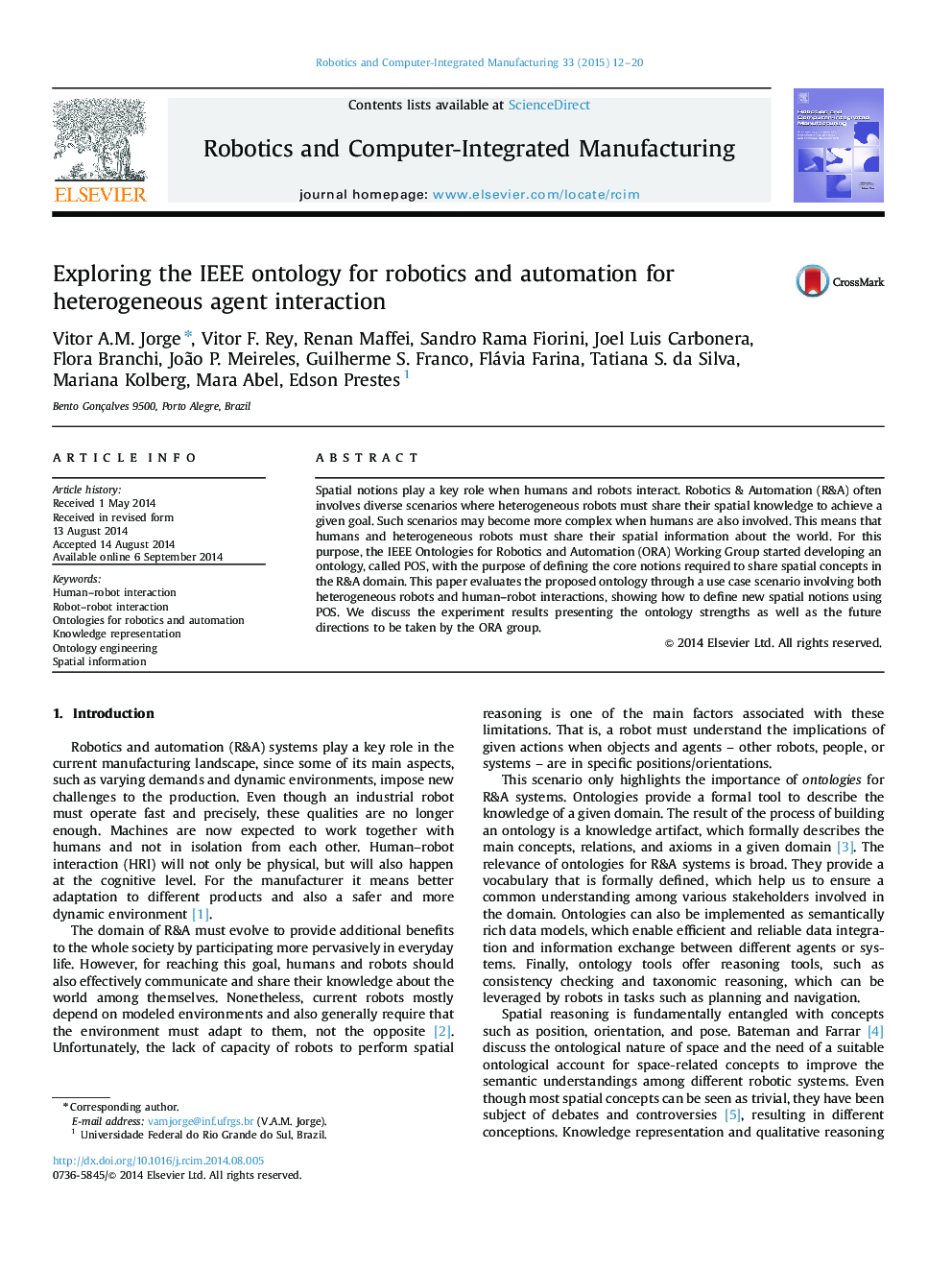| Article ID | Journal | Published Year | Pages | File Type |
|---|---|---|---|---|
| 413726 | Robotics and Computer-Integrated Manufacturing | 2015 | 9 Pages |
•The current work experimentally demonstrated the applicability of ORA in the context of R&A.•The benefits of using a common knowledge presentation strategy are showed.•The current experiment was also important to point future directions of the ORA group regarding future needs encompassing spatial notions.
Spatial notions play a key role when humans and robots interact. Robotics & Automation (R&A) often involves diverse scenarios where heterogeneous robots must share their spatial knowledge to achieve a given goal. Such scenarios may become more complex when humans are also involved. This means that humans and heterogeneous robots must share their spatial information about the world. For this purpose, the IEEE Ontologies for Robotics and Automation (ORA) Working Group started developing an ontology, called POS, with the purpose of defining the core notions required to share spatial concepts in the R&A domain. This paper evaluates the proposed ontology through a use case scenario involving both heterogeneous robots and human–robot interactions, showing how to define new spatial notions using POS. We discuss the experiment results presenting the ontology strengths as well as the future directions to be taken by the ORA group.
